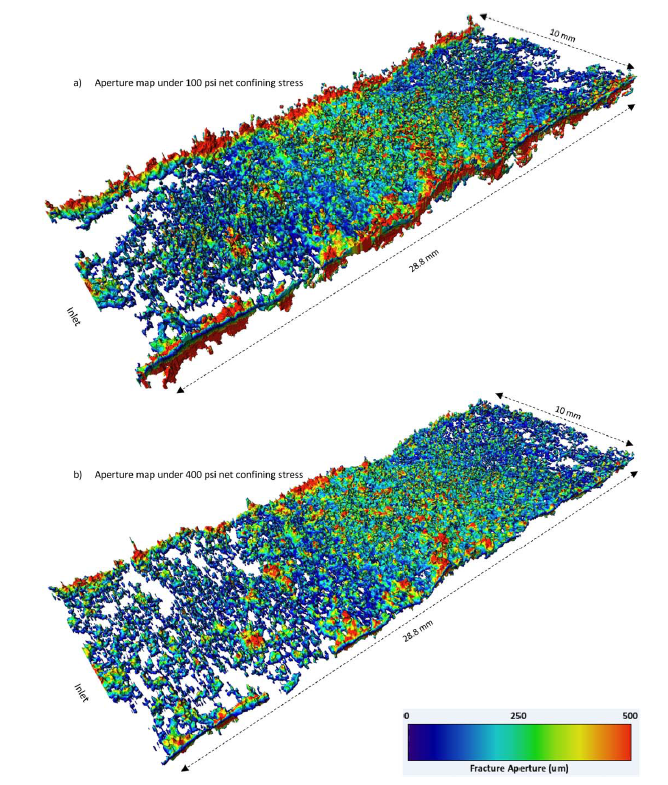Pore‐Scale Experimental Investigation of Two‐Phase Flow Through Fractured Porous Media
M. Arshadi, M. Khishvand, A. Aghaei, M. Piri, G. A. Al‐Muntasheri - Department of Petroleum Engineering, University of Wyoming, USA ; Thermo Fisher Scientific, Houston, USA ; EXPEC Advanced Research Center (EXPEC ARC), Saudi Aramco, Saudi Arabia
Understanding transport mechanisms that govern two-phase flow in fractured porous media has direct implications for natural and industrial processes such as extraction of hydrocarbons from fractured reservoirs, geologic sequestration of CO2, or fluid flow through aquifers.
![Pore‐Scale Experimental Investigation of Two‐Phase Flow Through Fractured Porous Media]()
We present the results of a systematic pore‐scale experimental investigation of two‐phase oil/brine flow through a miniature water‐wet, fractured sandstone core sample. X‐ray microtomography is employed to generate three‐dimensional fluid occupancy maps within a rough‐walled fracture and its neighboring rock matrix during drainage and imbibition flow experiments. Several different imbibition flow conditions were created by changing brine flow rate, fracture aperture field, and interfacial tension between the fluids. These maps along with steady‐state pressure drop data are then used to shed light on the dominant flow mechanisms and preferential flow paths through the matrix and fracture domains as well as fluid transfer between them during the imbibition processes. Depending on the fracture aperture properties and the magnitude of the local capillary pressures that are established under varying flow conditions, transport of the wetting phase across the hybrid matrix‐fracture medium is governed by flow through wetting layers of brine on fracture walls (fracture layer flow), center of the fracture (fracture bulk flow), and brine‐filled pores within the matrix. The hydraulic conductivity through these conduits is regulated by the medium as it identifies a combined flow path with minimum pressure drop from the inlet to the outlet of the system. The resulting balance determines the magnitude of fluid transfer experienced by the neighboring matrix and ultimate oil recovery as a result.
How PerGeos is used
Phase saturations, fluid occupancy maps, and statistical information related to the fracture and matrix were extracted from the reconstructed data using Avizo with a modified workflow
In the first step, we applied nonlocal means and median filters to smoothen the raw images and sharpen the phase boundaries. Next, filtered, wet image
sets (i.e., images with the fluid phases) were aligned with their corresponding reference image sets by moving them pixel-by-pixel in the X, Y, and Z directions until a suitable registration was achieved. Further, we used a volume edit module to assign zero value for the exterior of the scanned locations. All the wet images were then multiplied pixel-by-pixel by the pore map (binary image) obtained from corresponding reference images to generate a gray-scale image with zero and nonzero values representing solid and different fluids present in the pore space, respectively. Thus, different phases that coexisted in the pore space could be identified by deploying a segmentation method that used different intensity peaks in the multiplied images. This could be done since the solid phase was absent. The solid phase was then added to the segmented fluid phases (i.e., oil and brine) to construct a final three-phase labeled image.
In order to separately quantify saturation in the matrix and fracture, we created individual masks of the fracture and the matrix sections by manually tracking and segmentation of the fracture plane. These masks were then combined with the segmented wet images to generate three-dimensional fluid occupancy maps inside the fracture and the matrix. This step was time consuming since we needed to accurately track the fracture plane and identify the borders based on visual evaluation and by use of a drawing tool in Avizo Software.
